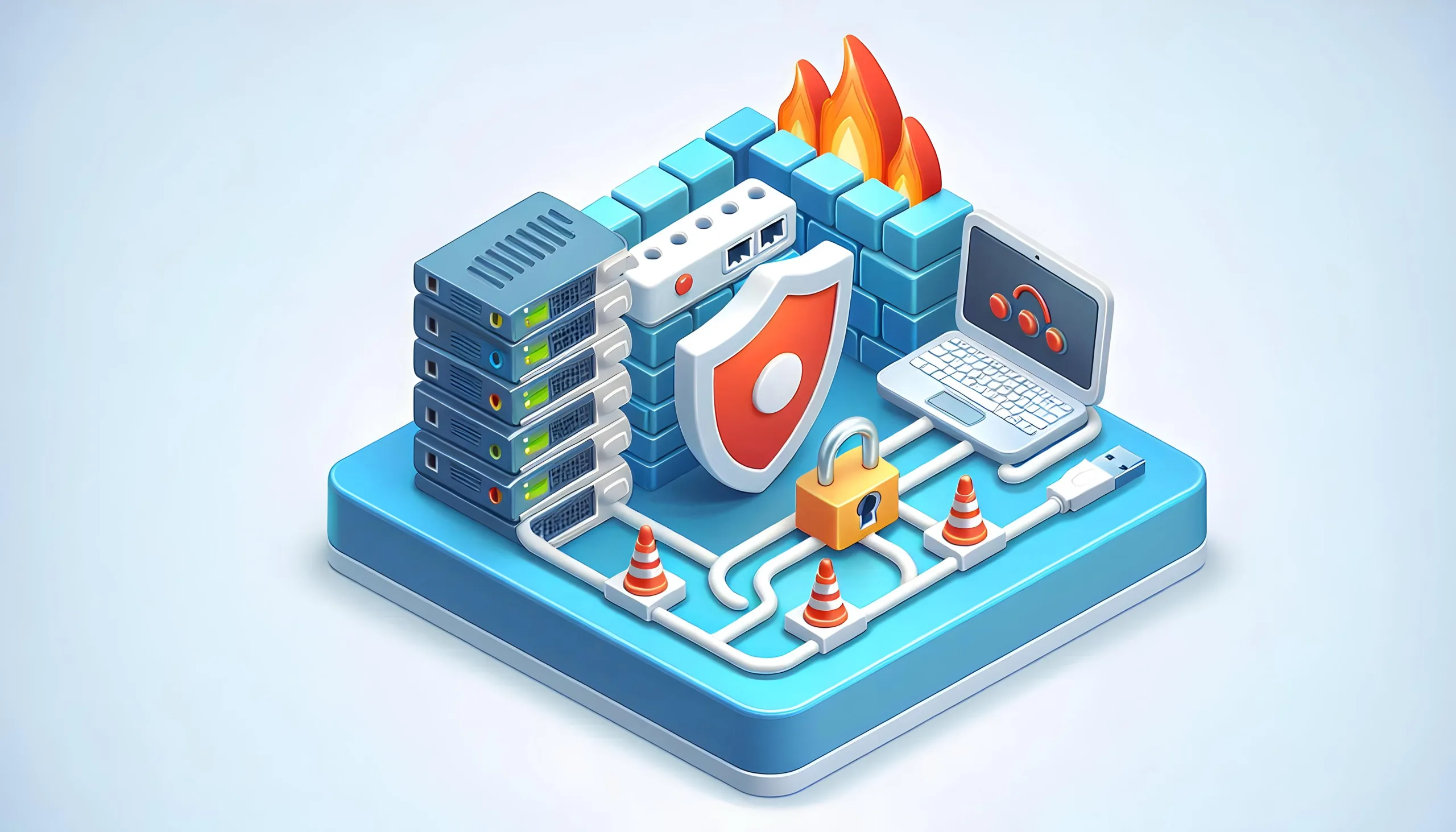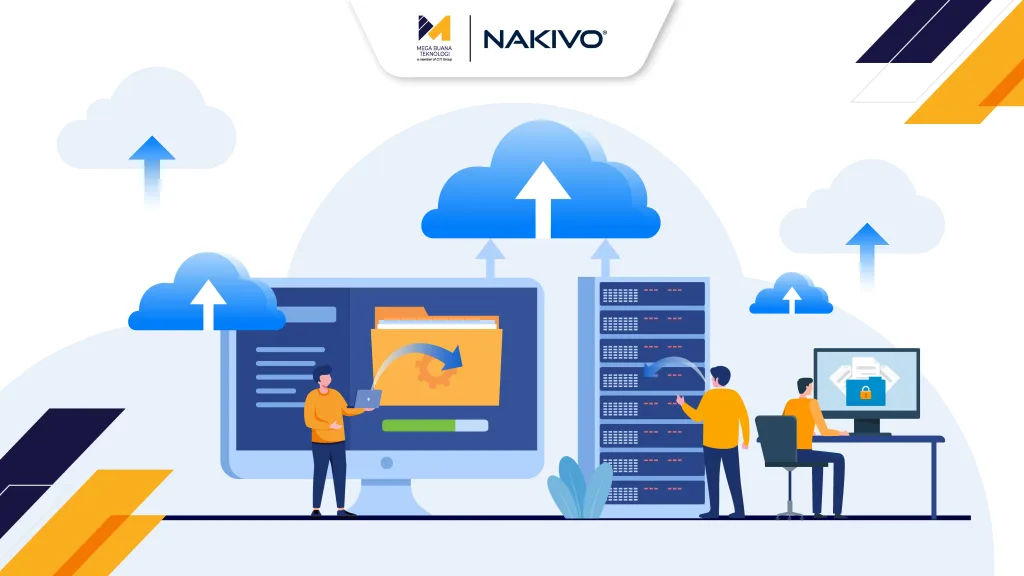Have you ever imagined what would happen if your entire company system suddenly stopped working? In fact, according to Infrascale, 93% of companies that experience prolonged data loss,more than ten day, are forced to file for bankruptcy in a year.
To ensure your operations remain uninterrupted, a well-designed Disaster Recovery strategy can be the key to business resilience. This article explores why a Disaster Recovery Plan (DRP) is essential and how it helps maintain business continuity in the digital era.
What is a Disaster Recovery Plan?
A Disaster Recovery Plan (DRP) is a structured plan outlining steps to recover from major disruptions, such as system failures, hardware malfunctions, cyberattacks, or natural disasters. The main goal is to ensure companies can resume operations quickly with minimal loss.
A DRP includes identifying critical assets, defining recovery priorities, backup strategies, failover procedures, and mechanisms to restore systems to normal conditions. A clear and well-structured DRP allows companies to respond to incidents faster and more efficiently without compromising productivity or customer service.
How Does a Disaster Recovery Plan Work?
A DRP ensures that a company has clear procedures to maintain data and system availability during incidents. Key steps include:
- Identify Critical Systems: Determine which systems are essential for business operations.
- Choose Protection Methods: Implement scheduled backups, data replication, or secondary sites.
- Execute Recovery Steps: When disruption occurs, follow the pre-planned recovery procedures.
- Restore Operations: Activate backup data, switch systems to failover mode, and resume normal services.
- Minimize Downtime: All steps are designed to limit disruption and keep the business running smoothly.
Why is a Disaster Recovery Plan Important for Companies?

Every business faces operational risks, from system failures and data loss to cyberattacks. Without a well-prepared recovery plan, the impact can be severe, including revenue loss, reputation damage, and service interruptions.
A DRP provides clear guidance for incident responses. It ensures faster recovery, minimizes losses, and maintains business continuity. Moreover, it helps organizations remain resilient amid uncertainty, allowing operations to continue securely and efficiently.
Types of Disaster Recovery Plans
Disaster Recovery Plans can generally be divided into four types:
1. Virtualized
Use virtualization technology to simulate and test system recovery. Testing is easier and more flexible, but companies must ensure virtual plans can be realistically implemented, with clear Recovery Point Objectives (RPO) and Recovery Time Objectives (RTO).
2. Network
Network-based DRPs involve infrastructure and connectivity between systems. Larger networks and datasets increase complexity. Companies must ensure adequate hardware and skilled personnel to execute the plan.
3. Cloud
Cloud DR relies on cloud services for backup and recovery. It offers flexibility and efficiency in terms of space, cost, and time. Security must be strictly managed, with layered protection and trusted cloud providers.
4. Data Center
Stores backups in a data center ready to be used during disruptions. The advantage is faster recovery because data is physically available and immediately accessible.
5 Benefits of Using a Disaster Recovery Plan
A Disaster Recovery Plan is essential for business continuity during operational disruptions. Key benefits include:
- Comprehensive Data Protection: Ensures all critical data is backed up and quickly restored.
- Faster Business Recovery: Minimizes downtime and keeps operations running.
- Reduced Financial Risk: Limits financial losses from data loss or system failures.
- Increased Customer Trust: Maintains reputation and customer confidence through quick recovery.
- Support for Strategic Decision-Making: Provides a framework for management to plan risk mitigation effectively.
With these benefits, a DRP becomes a critical foundation for companies to remain resilient, secure, and prepared for uncertainties.
Steps to Build an Effective Disaster Recovery Plan
Building an effective DRP requires systematic steps to ensure quick recovery and operational continuity:
1. Risk Analysis
Assess potential threats and vulnerabilities. Identify critical assets and determine the impact of potential loss or damage. Use checklists to evaluate risks and assess incident response teams.
2. Budgeting
Allocate a budget for disaster recovery, considering backup infrastructure (on-premises or cloud), software licenses, human resources, and ongoing management costs.
3. Recovery Planning
Develop detailed workflows with priority order of systems and data to be restored. Document recovery steps and assign responsibility for each task. Define RPO (Recovery Point Objective) and RTO (Recovery Time Objective) as benchmarks for acceptable downtime and data loss.
4. Testing
Conduct regular tests to evaluate DRP effectiveness. Repeated testing ensures that all teams understand their roles during real incidents.
5. Evaluation and Improvement
Analyze test results, identify what worked, what didn’t, and areas for improvement. Update the DRP regularly according to technology, infrastructure, and organizational changes.
Disaster Recovery NAKIVO: A Reliable Solution to Protect Company Data
NAKIVO delivers a fast, cost-effective, and flexible Disaster Recovery solution, designed to keep company data secure and operations running smoothly.
Key Advantages of NAKIVO
Installs 2x faster on NAS than other vendors. 49% cost reduction compared to traditional DR solutions. Offers 9+ recovery options, including instant VM restore to minimize downtime.
Benefits of NAKIVO
Key benefits of using NAKIVO:
- Comprehensive Protection: Safeguards all digital assets, from applications to critical data.
- Near-Instant Recovery: Ensures systems resume operation quickly.
- Automated DR Orchestration & Testing: Simplifies planning and testing without disrupting operations.
- Efficiency and Scalability: Cost-effective solution that grows with your business needs.
NAKIVO Advanced Features
Advanced features that support your company’s transformation:
- 1-Click Disaster Recovery: Restore systems in a single click.
- Flexible DR Sequences: Set recovery priorities based on business needs.
- Non-Disruptive DR Testing: Test without interrupting operations.
- Automated VM Failover & Efficient Replication: Keep backups current and ready when needed.
NAKIVO ensures your DR plan is not just a document, but a smart, fast, and easy-to-use solution that minimizes data loss risks while maintaining operational efficiency.
Enhance Business Resilience with NAKIVO and Mega Buana Teknologi
A well-implemented Disaster Recovery Plan helps businesses protect data, reduce downtime, and strengthen operational resilience. NAKIVO delivers a fast and flexible solution, ensuring DR plans are ready whenever needed. As an official partner, Mega Buana Teknologi (MBT), part of the CTI Group, ready to help companies implement a secure, fast, and easy-to-deploy DRP across various sectors using NAKIVO.
Contact us now for consultation and implementation of a DR solution customized to your company’s needs.
Author: Moyna Farla Tsabitah
Content Writer CTI Group




